| Columns Retired Columns & Blogs |
Sadly, Monsieur Lemire passed away on September 23rd at age 55.
https://simaudio.com/en/moon-is-grieving/
The last sentence of the review looks incomplete.
I performed the measurements of the Simaudio Moon 860A v2 with my Audio Precision SYS2722 system. I initially preconditioned the amplifier by operating it at 1/8 power into 8 ohms for 30 minutes. At the end of that time, the top panel's temperature was 106.4°F/41.4°C and that of the heatsinks 132.3°F/55.8°C. I ran the amplifier for another 30 minutes at 1/3 power into 8 ohms, a level that results in the maximum heat dissipation in the output devices. The top panel's temperature had risen to 113.4°F/45.3°C and the heatsinks were now too hot to touch, at 144.0°F/62.3°C. The Simaudio has an appropriate heatsink capability for its power rating, but it should be given sufficient ventilation.
The Moon 860A v2 preserved absolute polarity, ie, was noninverting, from both its balanced and unbalanced inputs in stereo mode and from the balanced input in bridged-mono mode. The voltage gain at 1kHz into 8 ohms was 31.4dB for both input types in stereo mode, 6dB higher in bridged-mono mode. The input impedance is specified as 47k ohms. I measured 24k ohms at 20Hz and 1kHz, dropping to 9k ohms at 20kHz for the single-ended inputs and twice those values for the balanced inputs.
The source impedance in stereo mode, including the series resistance of 6' of speaker cable, was a low 0.05 ohms at low and midrange frequencies, rising to 0.135 ohms at the top of the audioband. The variation in the Simaudio amplifier's small-signal frequency response with our standard simulated loudspeaker (fig.1, gray trace) was a negligible ±0.05dB. Into 8 ohms (fig.1, blue and red traces), the Moon 860A v2 started to gently roll off in the top octave, reaching –3dB at the specified 55kHz. As expected, given that there are now two output stages in series, the source impedance in bridged mode was higher, at 0.19 ohm at 20Hz and 1kHz, 0.38 ohm at 20kHz, more than doubling the variations in response with the simulated loudspeaker (fig.2, gray trace), which however are still negligible at ±0.1dB. The traces in figs.1 and 2 were taken in DC mode. Switching to AC mode gently rolled off the very low frequencies, reaching –1dB at 10Hz (fig.3). In all modes, the Moon 860A v2's reproduction of a 10kHz squarewave (fig.4) was commendably free from overshoot and ringing.
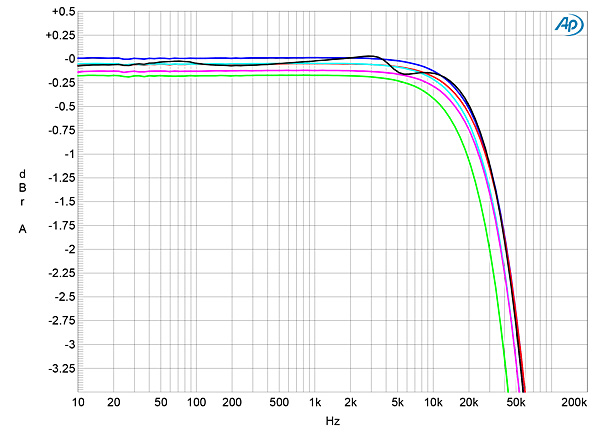
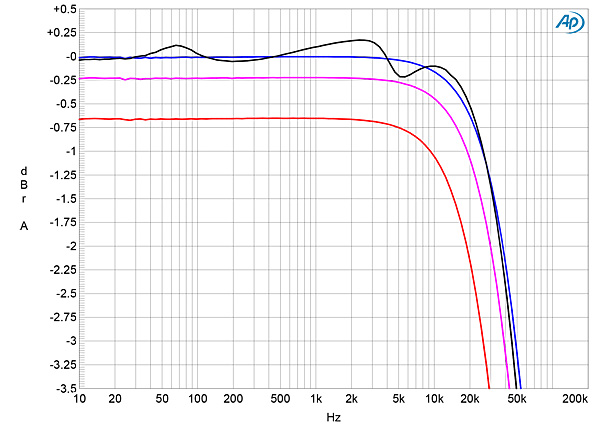
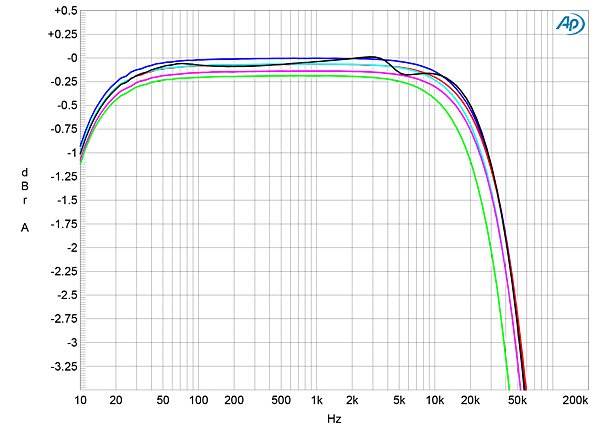
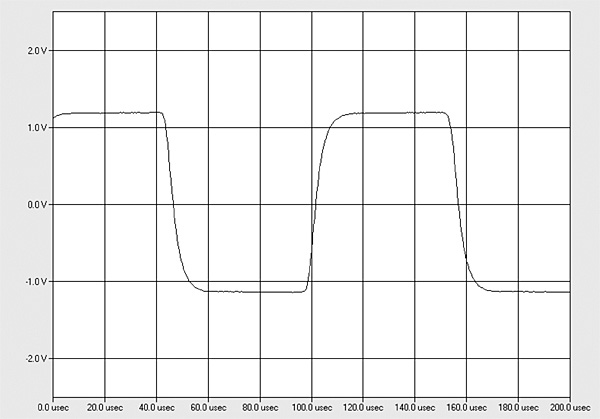
The Moon 860A v2's channel separation (not shown) was >100dB in both directions below 2kHz and still 80dB at the top of the audioband. The unweighted, wideband signal/noise ratio in stereo mode (ref.1W into 8 ohms, measured with the unbalanced inputs shorted to ground) was a very good 83.3dB (average of the two channels). This ratio improved to 93.1dB, left, and 91.5dB, right, when the measurement bandwidth was restricted to 22Hz–22kHz, and to 95.3dB, left, and 93.6dB, right, when A-weighted. Spectral analysis of the low-frequency noisefloor while the Simaudio drove a 1kHz tone at 1Wpc into 8 ohms (fig.5, blue and red traces) revealed a low level of random noise. AC-related spuriae at 60Hz and its odd- and even-order harmonics lay at or below –100dB.
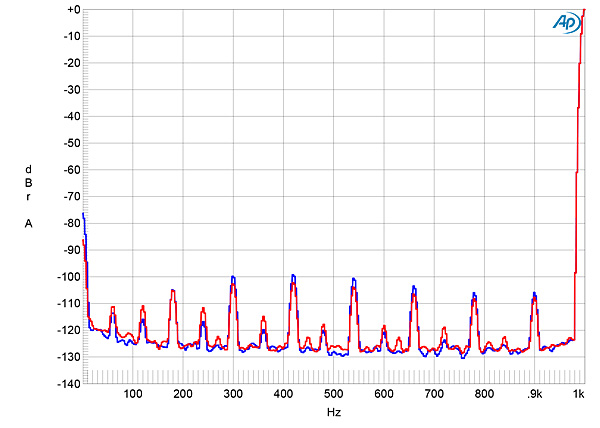
Simaudio specifies the Moon 860A v2's maximum power in stereo mode as 225Wpc into 8 ohms and 450Wpc into 4 ohms, both powers equivalent to 23.5dBW. With our usual definition of clipping—when the THD+noise reaches 1%—the Simaudio amplifier exceeded its specified powers. With both channels driven, it clipped at 295Wpc into 8 ohms (24.7dBW, fig.6) and 490Wpc into 4 ohms (23.9dBW, fig.7). In bridged mode, the Moon 860A v2 clipped at 880W into 8 ohms (29.4dBW, fig.8) rather than the specified 750W (28.75dBW), even though the wall voltage had dropped from 118.2V to 114.4V at the clipping power. However, when I tried to measure the clipping power into 4 ohms in bridged mode, the 10A rear-panel fuse blew at 1.2kW, when the THD+N was just 0.06%. Fortunately, I had performed all the testing by that time, other than how the THD+N varied with frequency in bridged mode into 2 ohms.
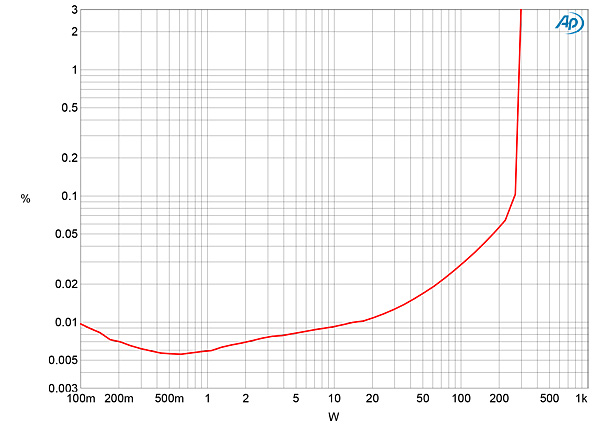
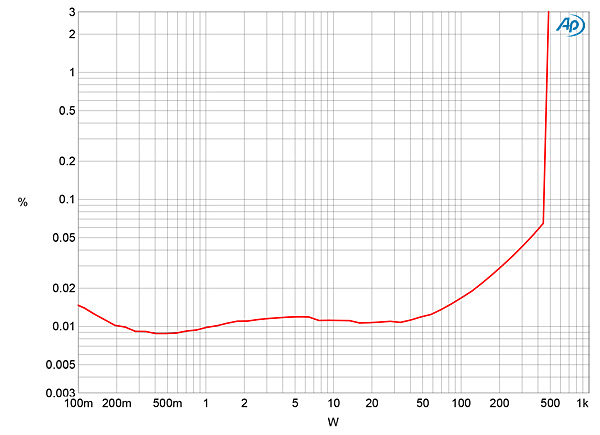
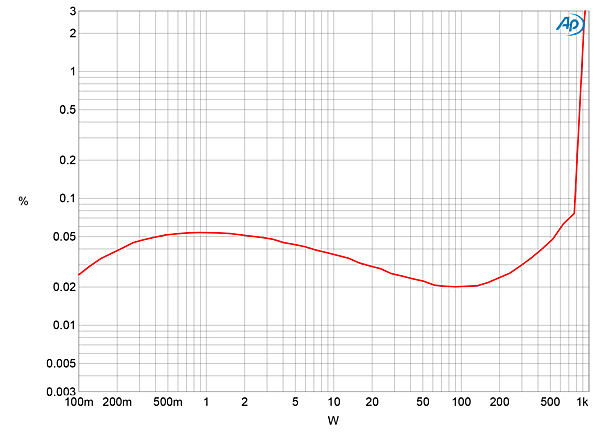
Fig.9 shows how the percentage of THD+N varied with frequency in stereo mode at 12.67V, which is equivalent to 20W into 8 ohms (blue and red traces), 40W into 4 ohms (cyan, magenta), and 80W into 2 ohms (green, gray). The THD+N was very low in the bass and midrange, particularly and peculiarly into 2 ohms, but rose in the top audio octaves, especially into the lower impedances. The manner in which the THD+N percentage changed with frequency at a higher voltage in bridged mode into 8 and 4 ohms (fig.10) was similar to how it had been in stereo mode.
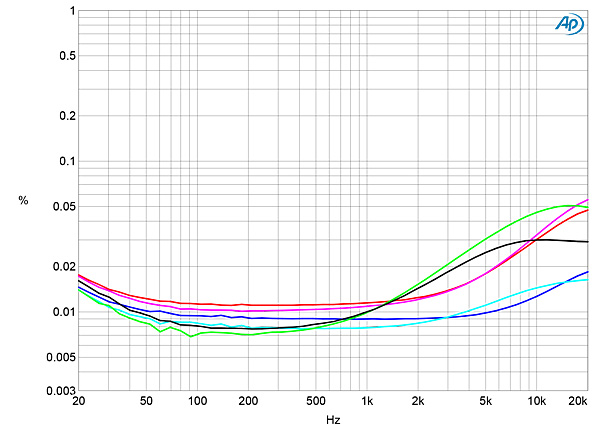
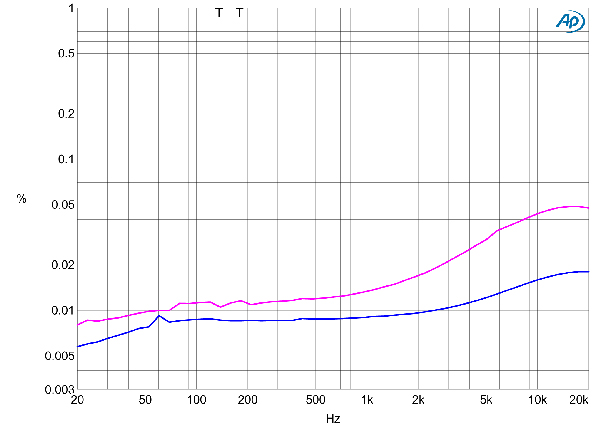
The distortion waveform with a 1kHz sinewave (fig.11) suggests that the third harmonic is dominant, though at low frequencies, the second harmonic was almost as high (fig.12). The higher-order harmonics all lay at –100dB (0.001%) or lower. I repeated this spectral analysis after replacing the blown fuse. While the second and third harmonics were at the same level as they were in fig.12, the higher-order harmonics were now all between 6dB and 18dB higher in level. It appears that the fuse hadn't fully protected the amplifier's internal components.
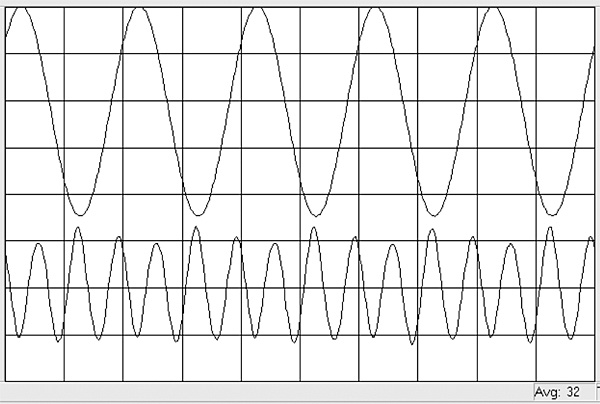
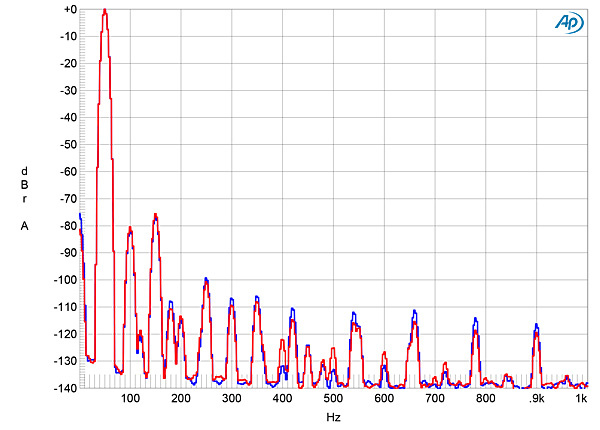
Before the fuse blew, I examined the distortion spectrum in bridged mode at the same level into 8 ohms that I had used to create fig.12. The third harmonic is still the highest in level, at the same –76dB (0.015%, fig.13), but the even-order harmonics are now all significantly lower. (In a bridged circuit with perfectly matched output stages, the even-order distortion components in those stages will cancel.)
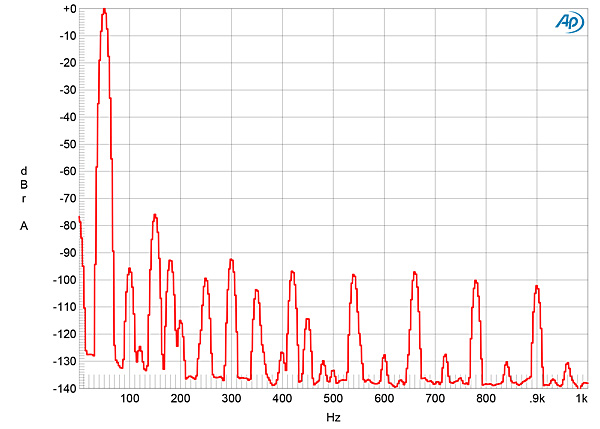
Intermodulation distortion was low in level. With the Moon 860A v2 driving an equal mix of 19 and 20kHz tones at 100Wpc peak into 4 ohms in stereo mode (fig.14) or in bridged-mono mode (not shown), the 1kHz difference product lay just below –90dB (0.003%), and while the higher-order products at 18 and 21kHz were 10dB higher in level, this is still low in absolute terms.
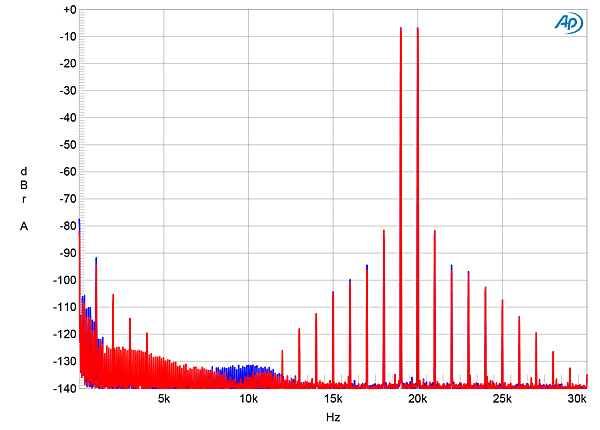
The Simaudio Moon 860A v2's measured performance is not dissimilar to that of the original Moon Evolution 860A, which Fred Kaplan reviewed in August 2015. However, the new version offers more power into low impedances and is less fazed by driving 2 ohms. In bridged-mono mode, it offers extremely high maximum power into higher impedances.—John Atkinson

Sadly, Monsieur Lemire passed away on September 23rd at age 55.
https://simaudio.com/en/moon-is-grieving/
The last sentence of the review looks incomplete.

I am so sorry for your loss. It is ours as well. Thank you for bringing this to our attention. FYI, Louis Lemire left us over a year ago, in 2021.
From Warsaw, where I'm covering the audio show, I've requested a fix to the last sentence. It was intended to trail off. The last paragraph should read:
As with everything in life, there's always more to be had, always more to want. But when amplifiers already deliver all you need...

" "We made the 888 to show the world what we can do," Costa explained as he sat in my music room. "
No simaudio didn't. They created the 888 amp with the intention to target the high end market in China. Hence the choice of name. 8 is a lucky number over there.